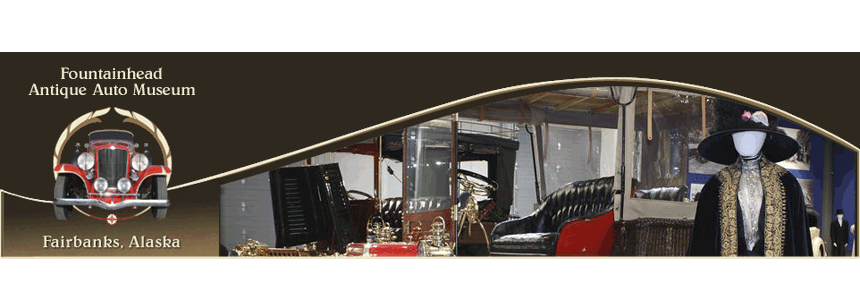Holding the Purse Strings
By Erika Holshoe, FAAM Summer Intern
As every fashionista knows, no outfit is complete without
accessories. Which is why we are so excited to open our newest exhibit “Holding
the Purse Strings: Women’s Accessories from the Turn of the Century
(1890s-1930s).” As the title suggests, this new exhibit displays handbags,
shoes and fans from, you guessed it, the turn of the century!
 |
| Chatelaine, Silver, late 19th century FIC.2018.001.018 |
 While leather is the preferred fabric of today’s handbag,
handbags from the turn of the century are glitzy, with glass beads, sterling
silver and metal mesh that sparkle in the light. When worn, these dazzling
handbags conveyed messages about the owner’s status in society. Such costly and
visually stunning bags demonstrated the owner’s wealth and power, as well as
their taste for modern fashion.
While leather is the preferred fabric of today’s handbag,
handbags from the turn of the century are glitzy, with glass beads, sterling
silver and metal mesh that sparkle in the light. When worn, these dazzling
handbags conveyed messages about the owner’s status in society. Such costly and
visually stunning bags demonstrated the owner’s wealth and power, as well as
their taste for modern fashion.
Before purses, precious objects were carried in drawstring
bags tied around the waist. With the popularity of robe a la française and robe
a la anglaise, pockets were tied around the waist and hidden under these
large skirts. But as the 19th century neared the end, the silhouettes
of women’s garments slimmed down… meaning no more room for pockets. With this
came the popularity of purses!
Watch this video from the National
Museums Liverpool to see pockets in action! https://www.youtube.com/watch?v=UpnwWP3fOSA
The first modern purses were called reticules and chatelaines.
Typically made of precious metals, they were pinned like broaches to the
waistband on chest of a ladies’ gown. Chatelaines
had multiple chains dangling from them, each with individual tools considered
essential for a lady. Kind of like a Swiss Army Knife! One of our chatelaines on exhibit has five chains,
with tools for sewing and writing. Chatelaines
also would have included a bag made of metal mesh or beaded fabric to carry
precious goods around, but our chatelaine’s
bag has been lost to the course of time.
In comparison to
tote bags of our day, chatelaines and other early purses may seem rather small.
A proper lady only needed to carry her most essential items with her: some
coins, a mirror and lipstick (when it became a more mainstream cosmetic). Due
to her reliance on servants and her husband or father, an upper class lady did
not need to carry more than the basic essentials. These bags were for
minimalists! However, with the rise of women in the workforce in the twentieth
century, purses began to come in all shapes and sizes to accommodate the
working woman.
Metal mesh bags from the turn of the century are big enough to just hold these few necessities. These bags are made of interlocking pieces of metal, precious or otherwise, much like a medieval knight’s chainmail. They could be painted with designs, often inspired by Persian carpets. Our “Whiting and Davis” mesh bag is printed with a beautiful Middle Eastern inspired motif in blue, white, yellow and orange. Its golden kiss lock clasp is engraved with a floral motif. It would have been the accessory in its day! The Whiting and Davis Company was founded in 1876 and pioneered the machinery to mass produce these gorgeous metal mesh bags. I suspect that these bags were popular not just for their good looks, but because they showed off the newest in emerging technologies!
While drawstring bags and mesh bags were quite popular, other popular purse styles included beaded bags with sturdy metal frames and delicate metal link handles, boxy luggage inspired leather bags, and clutches. The purses we have on display were all handmade, making them luxury goods. Most ladies would have made their bags using kits, which saved money… but not time.
I am so excited to showcase these bags for you! They are
truly spectacular and I hope you enjoy seeing them and all of the other
fabulous objects we have at the Fountainhead Antique Auto Museum.
“About.” About Whiting & Davis. https://whitinganddavisbags.com/history-about#history
Haertig, Evelyn. Restoring and Collecting Antique Beaded
Purses. Carmel, CA: Gallery Graphics Press, 2000.
Holiner, Richard. Antique Purses: A History, Identification,
and Value Guide. 2nd ed. Paducah, KY: Collector Books, 1987.
"Wearing Pockets." Introduction to 19th-Century
Fashion. February 08, 2013. http://www.vam.ac.uk/content/articles/a/history-of-pockets/.
-->




No comments:
Post a Comment
Blogging about the Fountainhead Antique Auto Museum's latest news, adventures and research